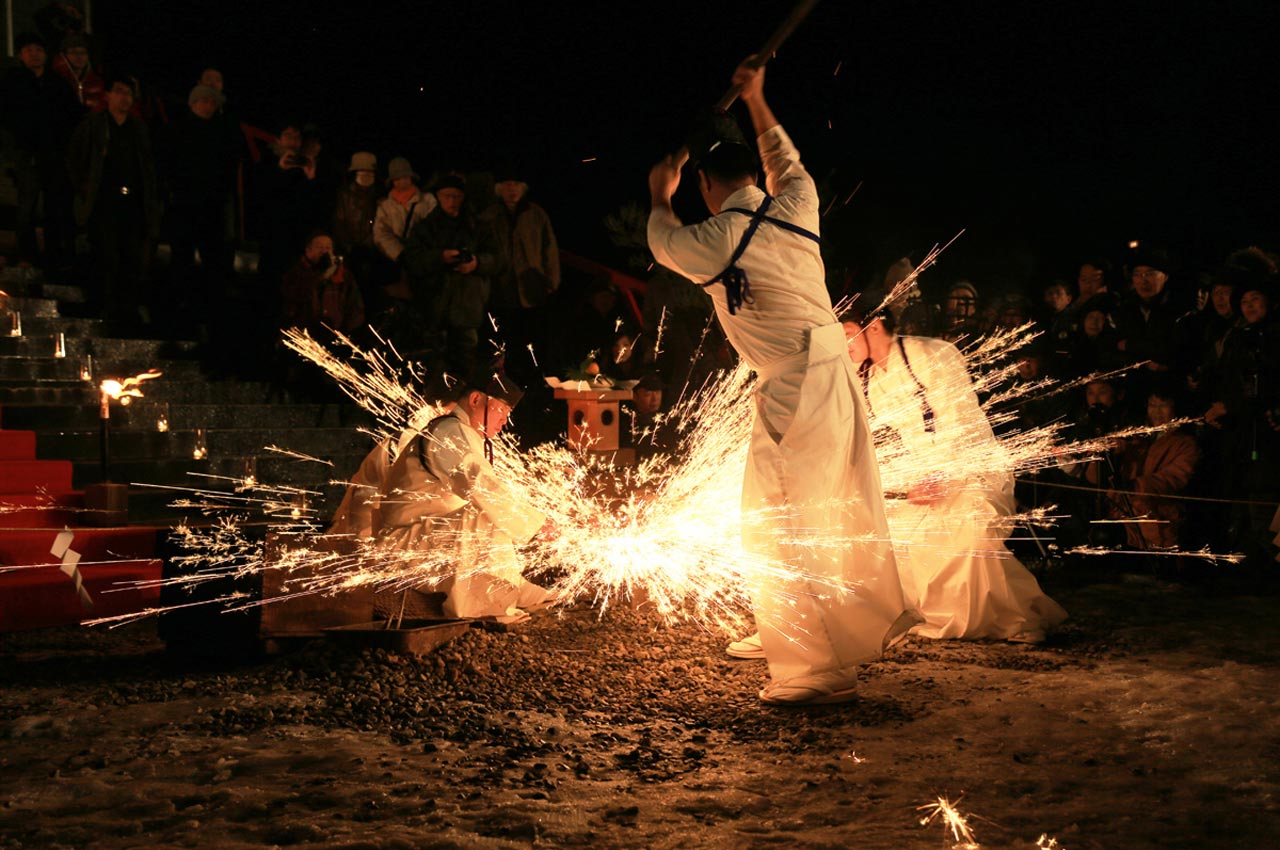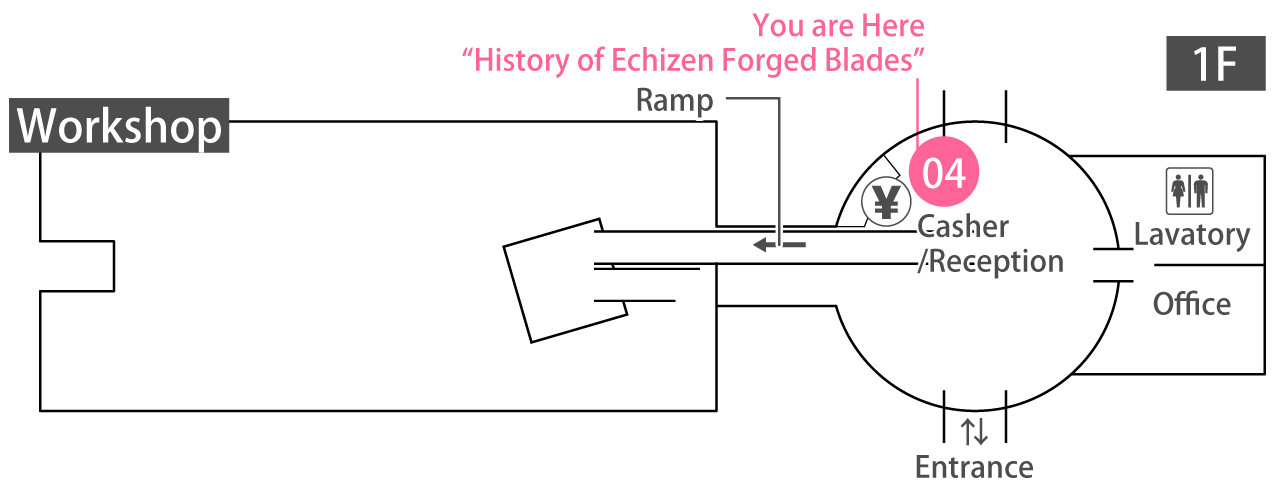 |
[04] History of Echizen Forged Blades |

|
The history of Echizen Forged Blades, as well as photographs of traditional ceremonies performed by bladesmiths, are on display on the wall near the reception/payment counter.
|

History of Echizen Forged Blades |
Back during the Northern and Southern Courts period, in 1337, there was a swordsmith in Kyoto named Chiyozuru Kuniyasu who moved to Fuchu (now Echizen city), where he made swords. Soon, Kuniyasu found himself also making sickles for farmers, and his techniques were passed down to blacksmiths in the area, becoming the origin of Echizen's blade-making tradition.
Echizen city, then known as Fuchu, was the hub of the Hokuriku region's government, culture, and economy, giving it great importance. At the same time, because it was surrounded by rice paddies and mountain farming villages, the need for sickles was increasing.
|
|
As the Edo era began, a blacksmith guild was organized under the patronage of the Fukui Domain, and sales of Echizen sickles began to extend nationwide. One of the largest roles in this market expansion is said to have been played by lacquer tappers, who traveled all over the country seeking lacquer for Echizen Lacquerware.
|
|
In 1979, Echizen blade-making received the industry's first official designation as a traditional craft. Even as today's bladesmiths inherit over 700 years of history and tradition, they consistently work to create brand new designs as well. Echizen Forged Blades continue to thrive as a local specialty of Echizen city.
|
Blade-Making Photo Gallery |

(Photo: 2014 Hatsu-uchi, taken by Shuichi Watanabe) |
The Echizen bladesmiths greet each new year with a hatsu-uchi (first hammering of the new year) ceremony that runs from December 31 to January 1.
Hatsu-uchi is a reenactment of the Echizen blade-making forging techniques of old, and the rite serves as a prayer for a good new year. Master and students dress in the traditional eboshi headgear and white garments, and visitors can watch their traditional blade forging performance, where iron is heated until it glows and is then hammered.
|
| The photos are judged by blade-making masters and other related parties, and the winning photos, which best show the bold energy of bladesmiths working to forge blades, are put on display for visitors to see. |
Floor Map |
 |
|

